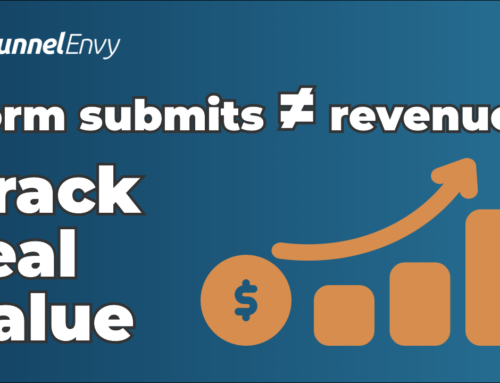Data siloing is like a poisonous, invisible gas: it’s hard to identify, you may not even know it’s affecting you, and it can cause significant health problems for your business.
Before we go any further, let’s back up and establish the term’s meaning. “Data siloing” is when you store important information in your business in a single, isolated place that is not easily accessible for people in the company outside of those who originally put it there. The term comes from the traditional silo used in agriculture to store grain or other supplies in bulk.
But unlike traditional silos, which are easily visible to most people, data siloing is challenging to identify. In fact, in our experience, companies suffering the most from data siloing don’t even know it’s an issue.
In this article, we’re going to correct that problem. Below are three of the most significant symptoms of data siloing. After we outline each problem, we’ll include a general fix for the problem that you can apply to these and other symptoms.
Redundancy and Repetition Across Departments
Most companies organize their teams into groups ranging from a handful of people to dozens of employees, depending on the size of the company and the nature of its work. Given this inherent separation between teams, it’s normal for there to be some repeated information across groups.
Suppose you see a huge percentage of information repeated in meetings, presentations, or other kinds of department-level communication, though. In that case, it’s a good sign that each group may have its data siloed. One classic example is a separation between an organization’s sales and marketing teams, which happens to companies of almost every size. Marketing teams often collect data related to a prospect’s initial demographic info: the size of the company they work at, their job title, etc. Once the sales team gets involved, they typically learn new information related to more specific details about the prospect. If the two teams don’t share data sufficiently, it can lead to repetition of the same tasks and frustration on the part of the prospect, ultimately causing them to drop out of the sales funnel.
Teammates Ask Several Questions About Other Departments
One of the most obvious signs that your company has a siloing problem is when individuals in separate departments have very few details about how different parts of the organization work. This disconnect often leads to questions about how the other part of the company completes tasks, inquiries they wouldn’t ask if data wasn’t so siloed.
Remember that there will always be some degree of separation between departments – that’s their nature. You wouldn’t expect someone in marketing to understand how to put together a quarterly accounting statement, just as you wouldn’t expect someone on the support desk to work on developing your company website. But when different departments in a company don’t have a basic understanding of how other groups work – where their files are stored, how they communicate internally, etc. – it’s a sign that you may store their data too far apart.
Changing Access Levels Takes Longer Than Expected
From small shops with just a few people to the largest global enterprises, companies of all sizes have some sort of permission structure. These systems typically govern things like access to software platforms, the ability to read and write data in a certain folder, or access to a certain email inbox.
During a normal month or quarter, it’s common to change these permission levels for several reasons. Old employees leave, new employees start, and some may even change positions in the team, bringing up a need for different permissions. It’s okay if permissions don’t change instantly, but if it’s regularly taking your team several days or weeks to change permission levels, it’s a sign that your data and processes may have a problem with siloing.
Solving the Siloed Data Problem
As we mentioned, these indicators are just symptoms of an issue with siloed data in your organization. You may come across other signs in your organization, but it’s arguably most important to note that you may not come across any signs at all. Data siloing can happen even within a growing organization that seems successful otherwise. It might not be a mission-critical issue, but if you don’t nip it in the bud right away, it can grow into something much more serious. Even if it never becomes the issue that threatens your business’s existence, there’s still a chance it can prevent you from operating at maximum efficiency.
Data siloing can happen even within a growing organization that seems successful otherwise. Share on XIn our experience, the best way to prevent siloed data from becoming a problem that threatens your business to any degree is to implement a shared data platform that all the different teams in your business can access to share relevant information. Regarding sales and marketing alignment, we suggest our clients implement a tool known as a customer data platform or CDP.
The benefit of using a CDP is that, unlike traditional data-storing methods, this platform allows information to be put in and taken out by all the appropriate parties and applications. We refer to this as bidirectional integration. In other words, a CDP can integrate with all the tools you’re already using in your stack: a CRM, website analytics tool, email automation platform, etc.
In ideal cases, not only will implementing a CDP help you better manage the data your business uses on a day-to-day basis, it will help you get more out of that information to serve organizational goals better. For example, suppose you can input information about visitors to your website and the specific pages they visit. In that case, you might then be able to integrate it with data from your sales department about which particular parts of your solution prospects were most interested. The conclusions you can gain from these two types of data combined will be much more effective than the information you gain from analyzing the data alone, which often happens when siloed.
Final Word on Siloed Data
Although it’s not the most obvious problem or glamorous challenge to solve in your business, siloed data is still a profound issue worth trying to prevent. If you let it fester and expand within your business, it can eventually become such a severe problem that it impacts conversion rates and customer satisfaction.
Are you concerned that your organization may be suffering from siloing, or simply want to take preventive measures to prevent this situation from happening in the future? Our team is available to help. We have years of experience ensuring our clients can leverage the data they gather across the entire organization instead of watching their productivity suffer from inefficient communication and unnecessary re-work.
To get started, just click here and fill out a short questionnaire that will help you learn more about FunnelEnvy pricing and give us the info we need to determine how best we can assist.




